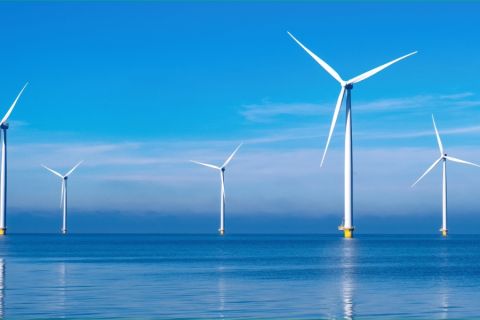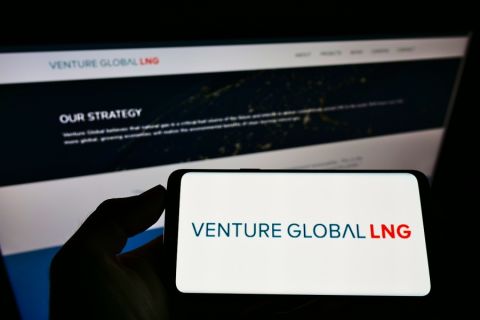AFRICA
South Africa plans to issue shale gas permits
South Africa plans to issue licenses permitting the exploration of shale gas reserves in 1Q, Mineral Resources Minister Susan Shabangu said. The country published proposed regulations for hydraulic fracturing Oct. 15, a year after lifting a ban on the process, as it seeks to tap as much as 13.7 Tcm (485 Tcf) of resources in the semi-arid Karoo region. Shell and other explorers have applied for permits to explore the Karoo. South Africa, which imports 70% of its crude oil, estimates shale gas may generate US $100 billion of sales within three decades, helping bring it closer to supplying its own energy demand.
Cobalt makes presalt discoveries offshore Angola
Cobalt International Energy Inc. announced in a press release discoveries at its Lontra #1 and Mavinga #1 deep-water presalt exploratory wells offshore Angola. On Block 20 the Lontra #1 well has reached total depth, and the drilling and evaluation results confirm an oil and gas discovery, Cobalt said. Cobalt’s partners in Block 20 include Sonangol Pesquisa e Produção S.A. and BP Exploration Angola (Kwanza Benguela) Ltd. In addition, the Cobalt-operated Mavinga #1 exploratory well reached total depth and encountered approximately 30 m (100 ft) of net oil pay on Block 21. This discovery was confirmed by the successful production of oil from mini drillstem tests, direct pressure and permeability measurements, and log and core analyses, Cobalt said, but efforts to establish a sustained flow rate from a full drillstem test were not successful. Cobalt’s partners in Block 21 include Sonangol Pesquisa e Produção S.A., Nazaki Oil and Gaz, and Alper Ltda.
ASIA-PACIFIC
Petronas makes three new gas discoveries
Petronas announced new gas discoveries in three of its upstream ventures in Malaysia, Indonesia, and Australia. The Malaysian discovery is via the Pegaga-1 well in Block SK320 offshore Sarawak, which is operated by Mubadala Petroleum through a Malaysian affiliate. Petronas Carigali Sdn. Bhd., a subsidiary of Petronas, has a 25% interest in the block. In Indonesia, PetroChina, which is the operator of and Petronas’ partner in the onshore Jabung block in Sumatra, has made a gas discovery through the NEB Base-1 well. Petronas holds a 42.85% equity in the Jabung block. Meanwhile in Australia the Evans Shoal North-1 appraisal well in the Evans Shoal gas field in the Timor Sea, located in the NT/P48 exploration permit, has been successfully drilled to the target depth of 3,955 m (12,976 ft). The partners in the NT/P48 joint venture (JV) are Shell (operator; 32.5%), Eni (32.5%), Petronas (25%), and Osaka Gas (10%). The well is operated by Eni on behalf of the JV.
Gas2Grid hits oil at Malolos-1
Gas2Grid Ltd. announced in a press release that it has lodged with the Philippine Department of Energy, under the terms and conditions of the service contract, an application to declare Malolos-1 an oil discovery. Gas2Grid successfully perforated and flow-tested two oil-bearing sandstones in Malolos-1 at depths of 2,219 m to 2,227.5 m (7,280 ft to 7,308 ft) and 2,178 m to 2,195.4 m (7,152 ft to 7,207 ft). Oil was produced on a short-term test at indicative production rates of between 100 b/d and 200 b/d of oil. Oil from the lower sandstone also flowed to just below the surface. These results have now been integrated with all other available technical data, and Gas2Grid considers Malolos-1 an oil discovery.
EUROPE
First Subsea to provide moorings for world’s largest spar
First Subsea has won a contract to provide mooring line connectors for a deepwater field operated by Statoil offshore Norway. The UK subsea mooring specialist was awarded the contract by Hyundai and Technip to supply the connectors for the spar platform to be located on the Aasta Hansteen gas field in the Norwegian Sea. The facility will be the world’s largest spar platform and the first of its kind offshore Norway, First Subsea said in a press release. The platform will be moored with 17 Series III Ballgrab subsea mooring connectors in 1,300 m (4,290 ft) of water, approximately 300 km (186 miles) west of Bodo in northern Norway. The platform is due to start producing in 2017 at a planned rate of 23 MMcm/d (812 MMcf/d) of gas. Statoil is the operator of Aasta Hansteen with a 75% interest, with its partners being OMV (15%) and ConocoPhillips (10%).
Endeavour announces start of production at Rochelle field
Endeavour International Corp. announced in a press release that first production from the Rochelle gas condensate field in the UK North Sea commenced Oct. 23, 2013. The West Rochelle W1 well, the first of two development wells, is now flowing natural gas with associated liquids. The second development well, East Rochelle E2, has been drilled to total depth, cased, and is in the process of being completed, according to the press release. The E2 well is expected to be online later this quarter and will provide redundancy in producing the company’s allotted capacity limits across the Scott platform. Endeavour has a 44% working interest in the Rochelle field located in blocks 15/26b, 15/26c, and 15/27.
MIDDLE EAST
Oryx hits oil at Ain Al Safra
Oryx Petroleum Corp. Ltd. announced in a press release the discovery and testing of crude oil at Ain Al Safra. The Ain Al Safra discovery will be appraised in 2014 as part of the multiwell appraisal and development drilling program in the Hawler license area in Kurdistan, where Oryx Petroleum is the operator and has a 65% participating and working interest. The Sakson Hilong 10 rig spudded the exploration well targeting the Ain Al Safra prospect, a broad fault-bounded anticline, in the Hawler license areas in early June, according to the release. The AAS-1 well targeted oil potential primarily in the lower Jurassic and Triassic and secondarily in the Cretaceous.
Marathon’s Mirawa-1 well finds oil, gas
Marathon Oil Corp., through its wholly owned subsidiary Marathon Oil KDV BV, announced in a press release that the Mirawa-1 exploration well has discovered multiple stacked oil and natural gas producing zones on the company’s operated Harir block in the Kurdistan region of Iraq. Located approximately 64 km (40 miles) northeast of Erbil, the Mirawa-1 well was drilled to a total depth of approximately 4,267 m (14,000 ft). Oil and natural gas shows were noted over an extensive gross interval of both Jurassic and Triassic reservoirs from 1,768 m (5,800 ft) to total depth, according to the release. An extensive drillstem testing program was conducted. Marathon Oil is the operator with a 45% working interest in the Harir block. Total holds a 35% working interest, and the Kurdistan regional government holds a 20% carried interest.
NORTH AMERICA
Eni, Quicksilver Resources enter shale deal
Eni has signed an agreement with Quicksilver Resources to jointly evaluate, explore, and develop unconventional oil reservoirs (shale oil) onshore the US, according to a news release. Eni will earn a 50% share in 52,500 gross acres held by Quicksilver in the Leon Valley area located in Pecos County, Texas. The terms of the agreement call for an initial three-phase program that includes the drilling of up to five exploration wells and the acquisition of a 3-D seismic survey aimed at determining the hydrocarbon potential of the area and the subsequent development plan, the release said. In order to earn a 50% interest in Quicksilver acreage, Eni will pay up to US $52 million representing 100% of the drilling, completion, and seismic costs. Following this initial investment, any future expenditure will be shared equally between Eni and Quicksilver.
Chevron establishes recoverable resource in Duvernay
Chevron Corp. announced in a press release the successful conclusion of the initial exploration phase by its Canadian subsidiary, Chevron Canada Ltd., in the Kaybob area of the Duvernay play located in west-central Alberta, Canada. Chevron Canada Ltd. successfully concluded the initial 12-well exploration drilling program in the liquids-rich portion of the Duvernay shale play, according to the release. Five wells have been completed and are tied in to production facilities, and an additional four wells are waiting on completion and tie-in. The company’s acreage is well positioned in the condensate-rich and volatile-oil portion of the play. Liquids yield for the completed wells ranges from 30% to 70% with initial production rates up to 212 Mcm/d (7.5 MMcf/d) of natural gas and 1,300 b/d of condensate.
GULF OF MEXICO
CGG will conduct GoM survey for Pemex
CGG announced in a press release that it has been selected to acquire a large high-end seismic acquisition survey in the Mexican waters of the Gulf of Mexico (GoM) on behalf of Pemex. The survey is Phase 5 in Pemex’s Centauro program, the largest ever proprietary 3-D wide-azimuth program to be conducted worldwide. Phase 5 will add another 6,850 sq km (2,645 sq miles) of data to the existing 25,000 sq km (9,653 sq miles) already acquired since Centauro began in October 2010. This brings the total volume to almost 32,000 sq km (12,355 sq miles), according to the release. The survey will be acquired by the Oceanic Vega and Oceanic Sirius, CGG’s two state-of-the-art 20-streamer vessels. The project is expected to be completed in March 2014, according to the release.
Technip wins LLOG GoM subsea contract
Technip was awarded a contract by LLOG Exploration Offshore for the development of the Delta House field located in the Mississippi Canyon area of the US Gulf of Mexico. The contract ranges in value from US $1.4 million to $3.4 million. This contract covers the project management, engineering, fabrication, installation, and precommissioning of more than 200 km (124 miles) of infield and export flowlines and risers. The water depth of this development varies from approximately 100 m to 2,000 m (360 ft to 6,500 ft). Technip’s operating center in Houston will perform the overall project management. The infield flowlines and risers will be welded at the group’s spoolbase in Mobile, Ala. The offshore installation is expected to be performed in the second half of 2014 by vessels from Technip’s fleet: The Deep Blue will lay the deepwater infield lines, while the G1200 construction vessel will install the export flowlines.
SOUTH AMERICA
Petrobras hits oil with Bracuhy probe, confirms Jupiter connectivity
An ultra-deepwater appraisal well has confirmed good connectivity between the large Jupiter oil, gas, and condensate discovery offshore Brazil and the nearby Bracuhy discovery in the presalt Santos basin. Operator Petrobras said in a press release it had completed drilling well 3-BRSA-1183-RJS (3-RJS-713) in Block BM-S-24, the third well drilled in the Jupiter area. The well confirmed a hydrocarbon column of about 160 m (525 ft) starting at a depth of 5,322 m (17,461 ft) containing rocks of good porosity and permeability characteristics. In addition to the gas cap and condensate, Petrobras confirmed that the well also hit an oil column about 100 m (328 ft) thick. A further appraisal well and a formation test are planned for the oil-bearing zone to verify its characteristics and the reservoirs’ productivity in 2014.
Total will develop Vega Pleyade field
Total has made the final investment decision to develop the offshore Vega Pleyade gas and condensate field, the company said in a press release. Vega Pleyade will produce through three horizontal wells. Together with production from the other Total-operated fields in the area, it will allow optimization of supply to the existing treatment plants and continuation of the plateau production of 18 MMcm/d (636 MMcf/d) or 130,000 boe/d, according to the press release. Vega Pleyade is located offshore Tierra del Fuego, Argentina, in the Cuenca Marina Austral 1 (CMA-1) concession that Total has operated since 1978. The field development plan consists of a wellhead platform in a water depth of 50 m (164 ft) that will be tied in to the Total-operated onshore Rio Cullen and Canadon Alfa treatment plants by a 77-km (48-mile) pipeline, according to the release.
Recommended Reading
US Interior Department Releases Offshore Wind Lease Schedule
2024-04-24 - The U.S. Interior Department’s schedule includes up to a dozen lease sales through 2028 for offshore wind, compared to three for oil and gas lease sales through 2029.
Utah’s Ute Tribe Demands FTC Allow XCL-Altamont Deal
2024-04-24 - More than 90% of the Utah Ute tribe’s income is from energy development on its 4.5-million-acre reservation and the tribe says XCL Resources’ bid to buy Altamont Energy shouldn’t be blocked.
Mexico Presidential Hopeful Sheinbaum Emphasizes Energy Sovereignty
2024-04-24 - Claudia Sheinbaum, vying to becoming Mexico’s next president this summer, says she isn’t in favor of an absolute privatization of the energy sector but she isn’t against private investments either.
Venture Global Gets FERC Nod to Process Gas for LNG
2024-04-23 - Venture Global’s massive export terminal will change natural gas flows across the Gulf of Mexico but its Plaquemines LNG export terminal may still be years away from delivering LNG to long-term customers.
US EPA Expected to Drop Hydrogen from Power Plant Rule, Sources Say
2024-04-22 - The move reflects skepticism within the U.S. government that the technology will develop quickly enough to become a significant tool to decarbonize the electricity industry.




